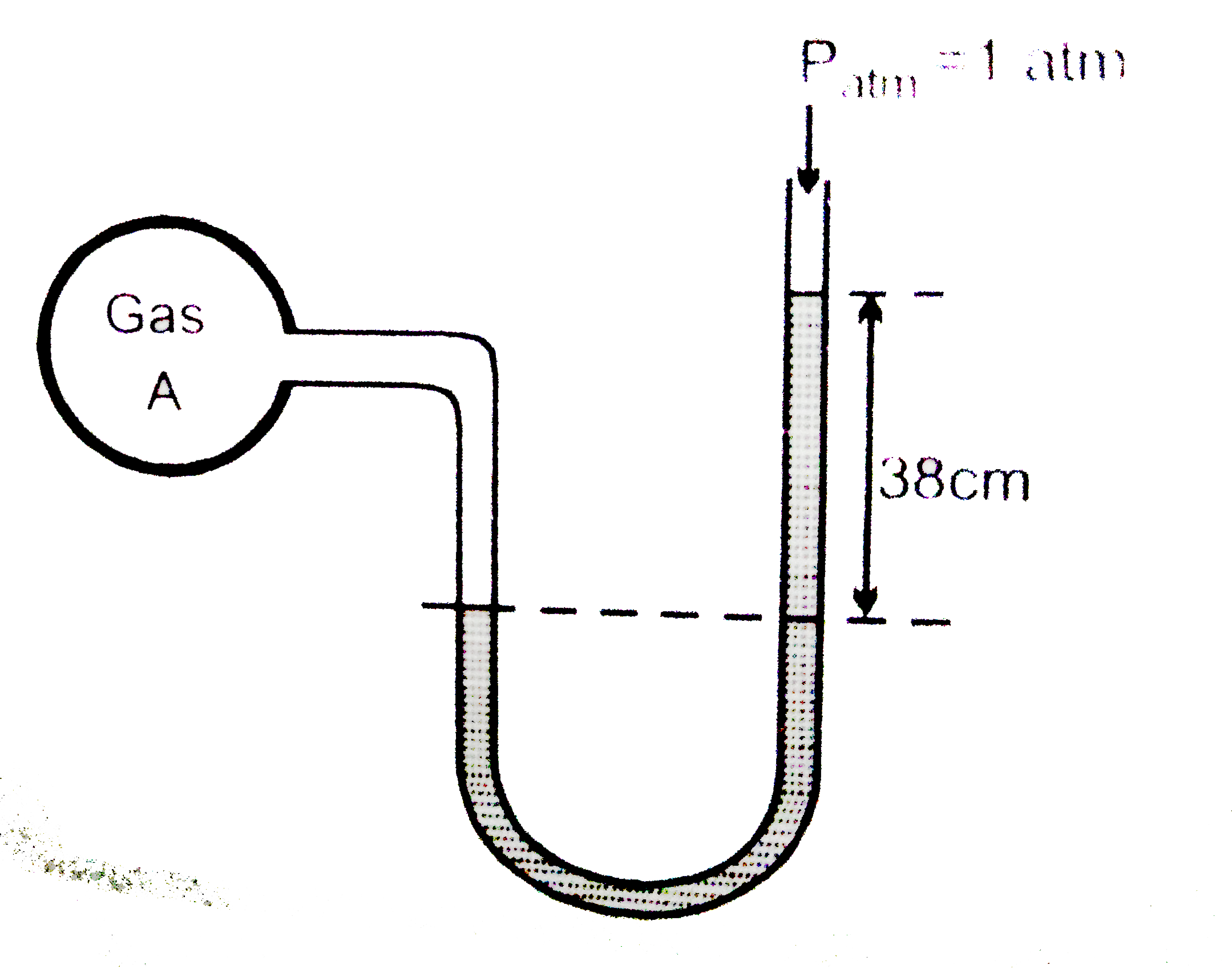Which of the following statements is(are) correct for a gas X having molar mass 5g and density 0.3g/litre at 0.5 atmospheric pressure at 300 K?
The gas “X” will behave ideally
The force of attraction will dominate over the force of repulsion among the gas molecules
The force of repulsion will dominate over the force of attraction among the gas molecules
None of these
The correct Answer is:B
To determine which statements are correct for gas X with the given properties, we will follow these steps:
Step 1: Calculate the Volume of Gas X
Given:
- Molar mass (M) = 5 g/mol
- Density (d) = 0.3 g/L
Using the formula for density:
d=mV
Where:
- m = mass of the gas
- V = volume of the gas
We can rearrange this to find the volume:
V=md
Assuming we have 1 mole of gas (mass = 5 g):
V=5g0.3g/L=50.3≈16.67L
Step 2: Calculate the Compressibility Factor (Z)
The compressibility factor Z is given by:
Z=PVRT
Where:
- P = pressure = 0.5 atm
- V = volume ≈ 16.67 L (from Step 1)
- R = ideal gas constant = 0.0821 L·atm/(K·mol)
- T = temperature = 300 K
Substituting the values:
Z=(0.5atm)(16.67L)(0.0821L⋅atm/(K⋅mol))(300K)
Calculating:
Z=8.33524.63≈0.338
Step 3: Analyze the Compressibility Factor
The value of Z is approximately 0.338, which is less than 1.
- If Z<1, it indicates that the attractive forces between gas molecules dominate over the repulsive forces.
Conclusion
Based on the calculations:
1. Gas X does not behave ideally (since Z<1).
2. The attractive forces dominate over the repulsive forces among the gas molecules.
Final Answer
- The correct statement is: "The force of attraction will dominate over the force of repulsion among the gas molecules."
Given:
- Molar mass (M) = 5 g/mol
- Density (d) = 0.3 g/L
d=mV
Where:
- m = mass of the gas
- V = volume of the gas
V=md
V=5g0.3g/L=50.3≈16.67L
The compressibility factor Z is given by:
Z=PVRT
- P = pressure = 0.5 atm
- V = volume ≈ 16.67 L (from Step 1)
- R = ideal gas constant = 0.0821 L·atm/(K·mol)
- T = temperature = 300 K
Z=(0.5atm)(16.67L)(0.0821L⋅atm/(K⋅mol))(300K)
Z=8.33524.63≈0.338
The value of Z is approximately 0.338, which is less than 1.
Based on the calculations:
1. Gas X does not behave ideally (since Z<1).
2. The attractive forces dominate over the repulsive forces among the gas molecules.
- The correct statement is: "The force of attraction will dominate over the force of repulsion among the gas molecules."
Topper's Solved these Questions
- STATES OF MATTERBOOK - VMC MODULES ENGLISHCHAPTER - STATES OF MATTEREXERCISE - Level-2 (NUMBERICAL VALUE TYPE FOR JEE MAIN
15 Videos
- STATES OF MATTERBOOK - VMC MODULES ENGLISHCHAPTER - STATES OF MATTEREXERCISE - JEE-Main ( ARCHIVE )
17 Videos
- STATES OF MATTERBOOK - VMC MODULES ENGLISHCHAPTER - STATES OF MATTEREXERCISE - Level-1
75 Videos
- STATES OF MATTERBOOK - VMC MODULES ENGLISHCHAPTER - STATES OF MATTEREXERCISE - IMPECCABLE
50 Videos
- STOICHIOMETRY - IBOOK - VMC MODULES ENGLISHCHAPTER - STOICHIOMETRY - IEXERCISE - JEE Advanced (Archive)
31 Videos
Similar Questions
Calculate the pressure of a gas whose molar mass is 29.3gmol−1 having density 1.29kgm3 at 273 K temperature
View SolutionCalculate the temperature of 2.0 moles of a gas occupying a volume of 5.0 litres at 2.46 atmosphere.
View SolutionA gaseous compound is composed of 85.7% by mass carbon and 14.3% by mass hydrogen. Its density is 2.28 g/litre at 300Kand1.0 atm pressure. Determine the molecular formula of the compound.
View SolutionA gaseous compound is composed of 85.7% by mass carbon and 14.3% by mass hydrogen. Its density is 2.28 g/litre at 300Kand1.0 atm pressure. Determine the molecular formula of the compound.
View SolutionFind the volume of 900 g of cooking oil whose density is 0.9g/cm3. Give the answer in litres.
View SolutionA monometer contains a liquid of density 5.44g/cm3 is attached to a flask containing gas A'asfollows<br><imga≤ocr_imageload∈g=lazysrc=https://d10lpgp6xz60nq.cloudfront.net/physics_images/NRA_PHY_CHM_JMA_C03_E01_213_Q01.pngwh=80%sty≤=background:white;><br>Ifthesameliqusused∈¯ometer→measuretheatmosphericpressure,thenwˆwillbethe≤n>hoftheliquolumn,whichexertspressureequal→1atm?(densityofHg=13.6g//cm^(3))
View SolutionA manometer contains a liquid of density 5.44g/cm3 is attached to a flask containing gas 'A' as follows

If the same liquid is used in barometer to measure the atmospheric pressure, then what will be the lengh of the liquid columnm which exerts pressure equal to 1 atm ? (density of Hg=13.6g/cm3)
View SolutionAt STP 5.6 "litre" of a gas weigh 8 g. The vapour density of gas is:
View SolutionAt STP5.6litre of a gas weigh 60g. The vapour density of gas is:
View SolutionThe mass of 5 litre of water is 5 kg. Find the density of water in g cm−3
View Solution
